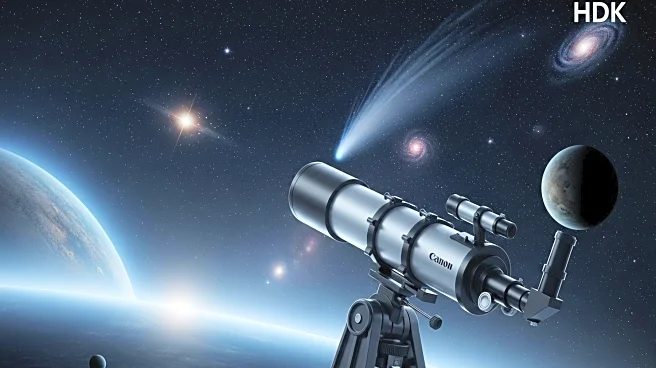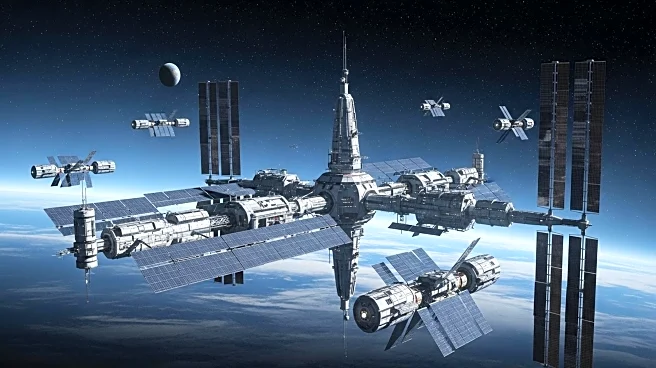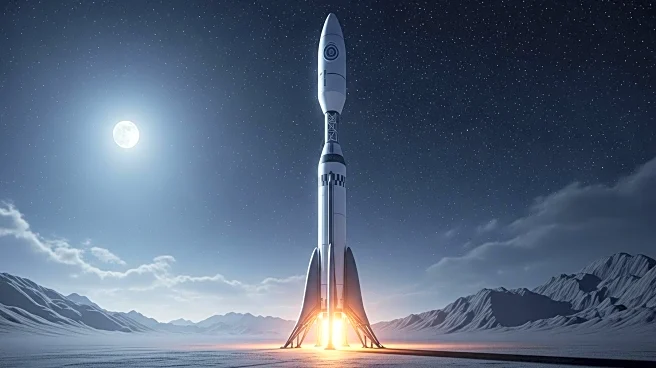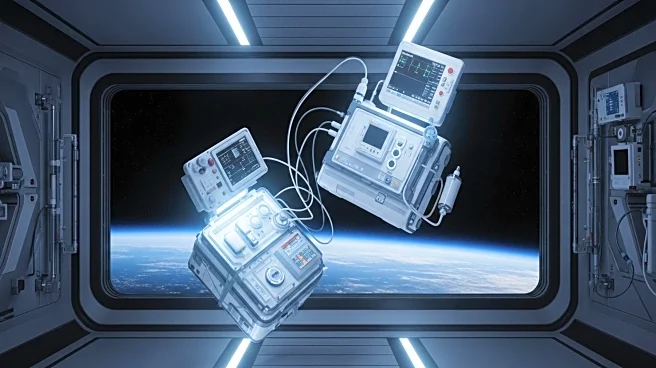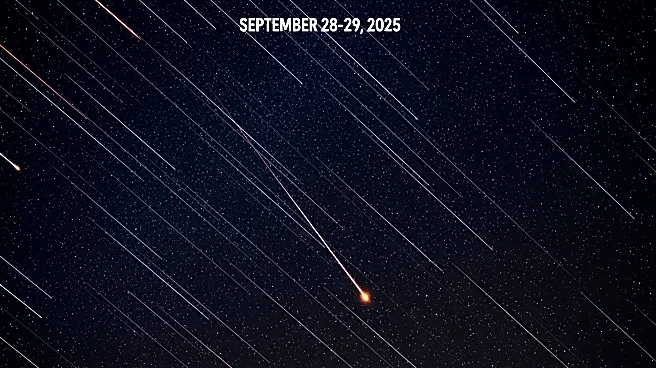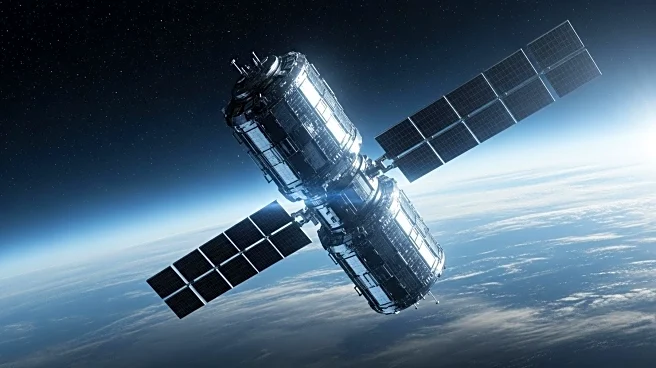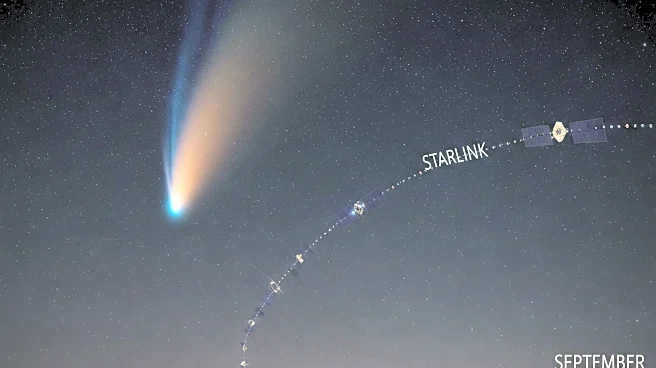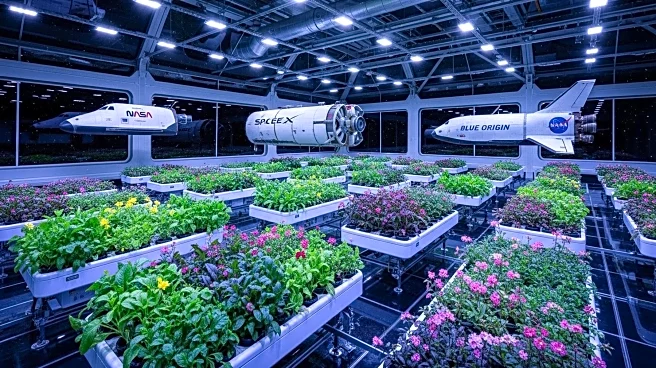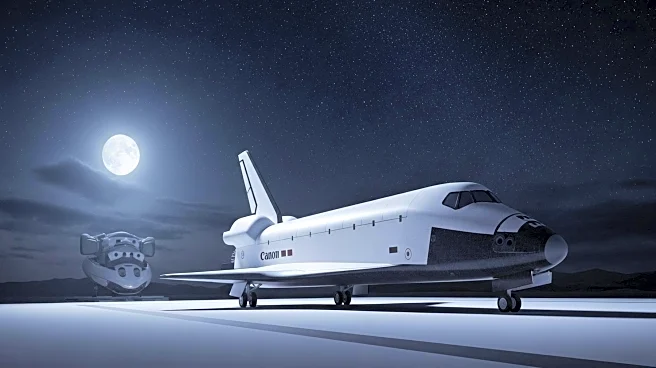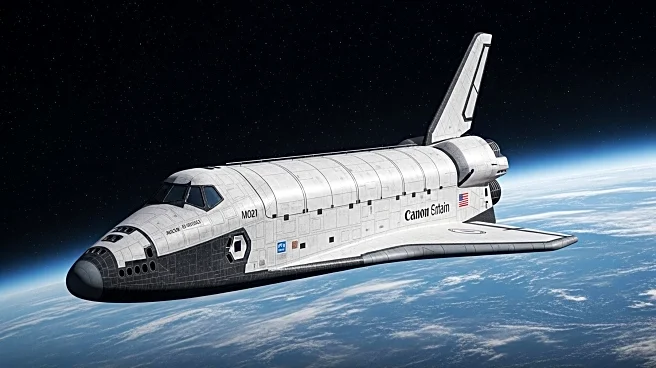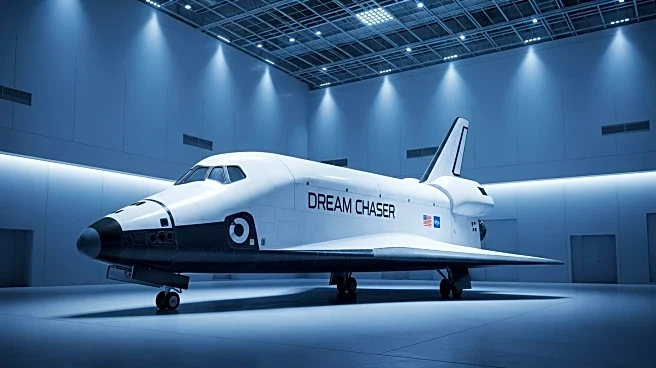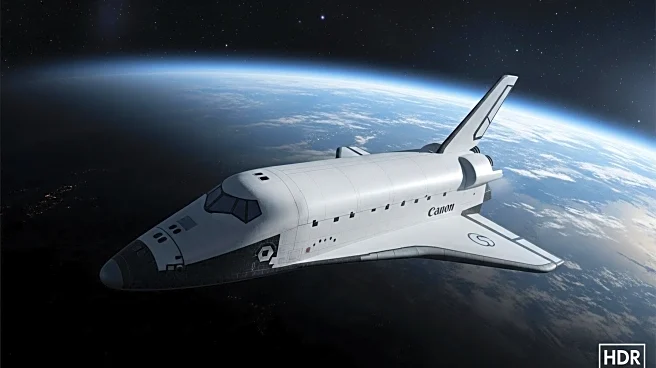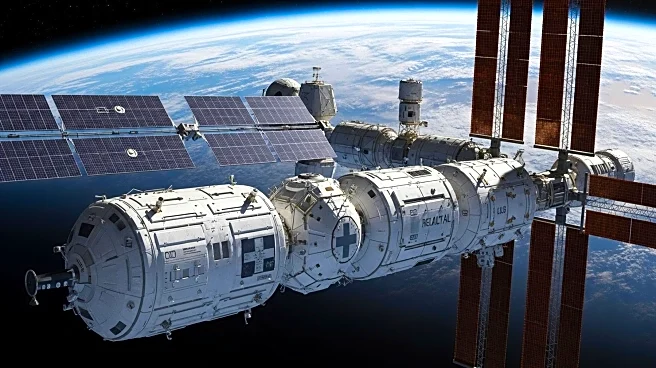What is the story about?
What's Happening?
NASA has outlined several celestial events occurring on September 28-29, 2025, including the visibility of planets such as Saturn, Mars, Venus, and Jupiter. Saturn, recently at opposition, will be visible throughout the night, while Mars will set low in the west. Venus and Jupiter will be visible in the pre-dawn sky. Additionally, SpaceX plans to launch 24 new Starlink satellites on September 28, which will be visible as a 'train' of lights in the sky shortly after sunset or before sunrise. The International Space Station will also be visible around twilight. Meteor activity is expected to be modest, with minor showers like the Southern Taurids and Orionids producing few meteors per hour. NOAA forecasts quiet geomagnetic conditions, limiting aurora visibility to high latitudes.
Why It's Important?
These celestial events provide opportunities for skywatchers and astronomers to observe and study planetary movements and meteor showers. The SpaceX Starlink launch contributes to the expansion of global broadband internet coverage, impacting telecommunications and internet access worldwide. The visibility of the International Space Station offers educational opportunities for the public to engage with space exploration. The quiet geomagnetic conditions mean limited aurora activity, affecting tourism in regions known for aurora viewing. Overall, these events highlight the interconnectedness of space technology and natural phenomena, influencing both scientific research and public interest in astronomy.
What's Next?
Skywatchers are advised to use apps like NASA's Spot the Station for precise timings of ISS passes and to check SpaceX's Starlink tracking for satellite visibility. Observers should find dark sky locations to maximize meteor viewing opportunities. SpaceX's continued satellite launches will further enhance global internet connectivity, with implications for remote areas and developing regions. NOAA's forecasts suggest continued quiet geomagnetic conditions, but unexpected solar activity could alter aurora visibility. The ongoing observation of celestial events will contribute to scientific understanding and public engagement with space phenomena.
Beyond the Headlines
The expansion of SpaceX's Starlink network raises questions about space debris and the long-term sustainability of satellite constellations. The visibility of the ISS and Starlink satellites underscores the growing presence of human-made objects in space, prompting discussions on space traffic management and environmental impact. The quiet geomagnetic conditions highlight the importance of monitoring space weather for potential disruptions to communication systems and power grids. These events also reflect the cultural significance of stargazing and the human fascination with the cosmos, fostering a sense of wonder and exploration.
AI Generated Content
Do you find this article useful?
